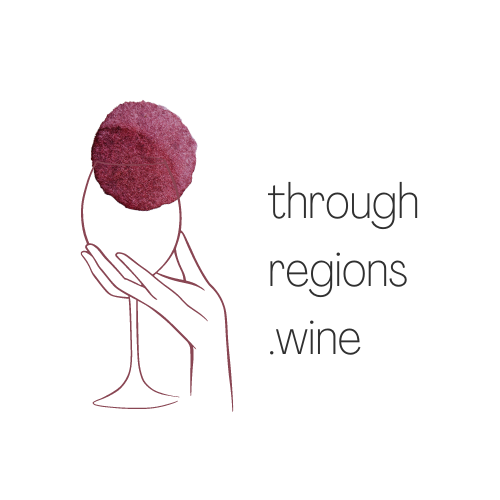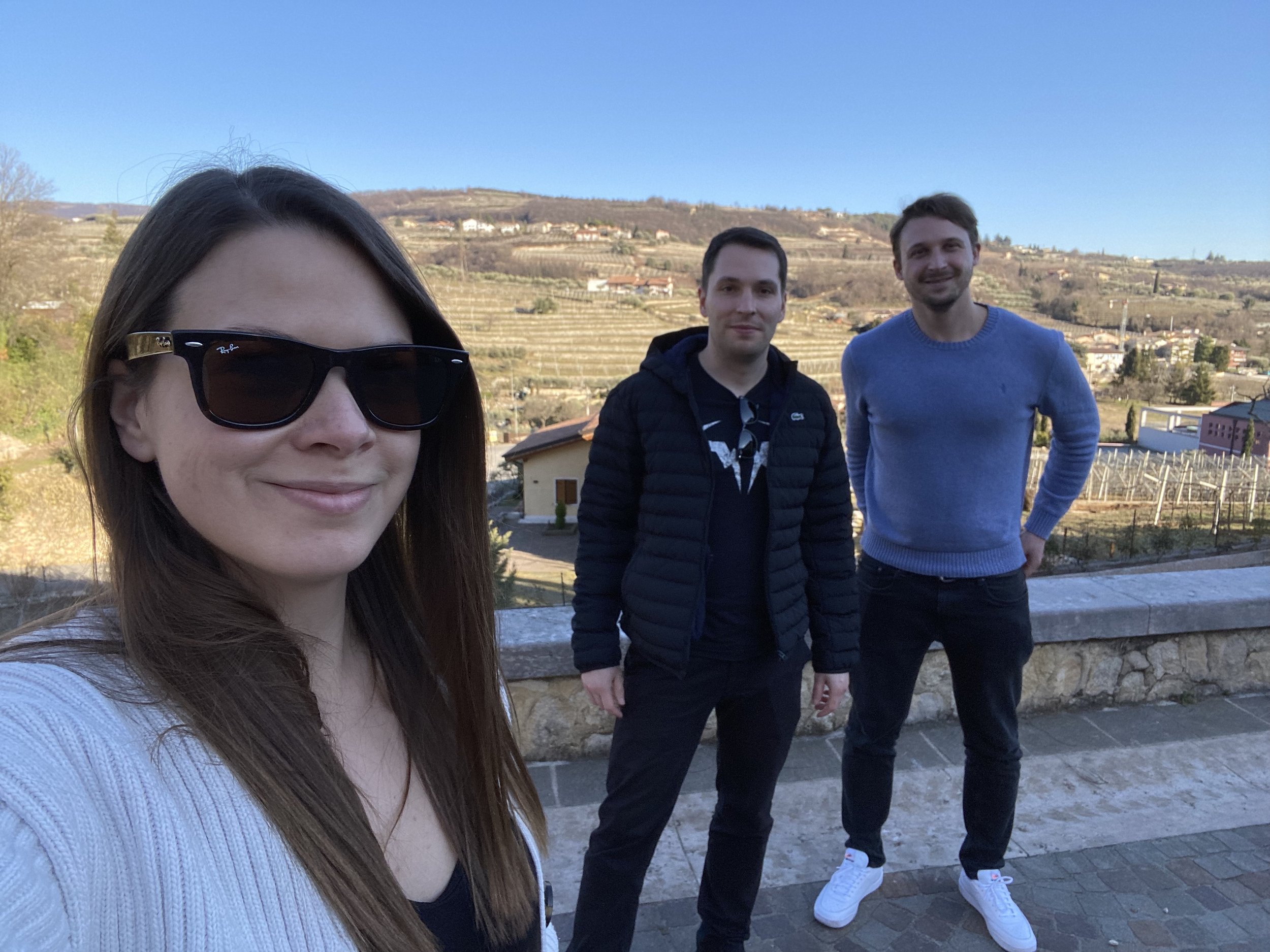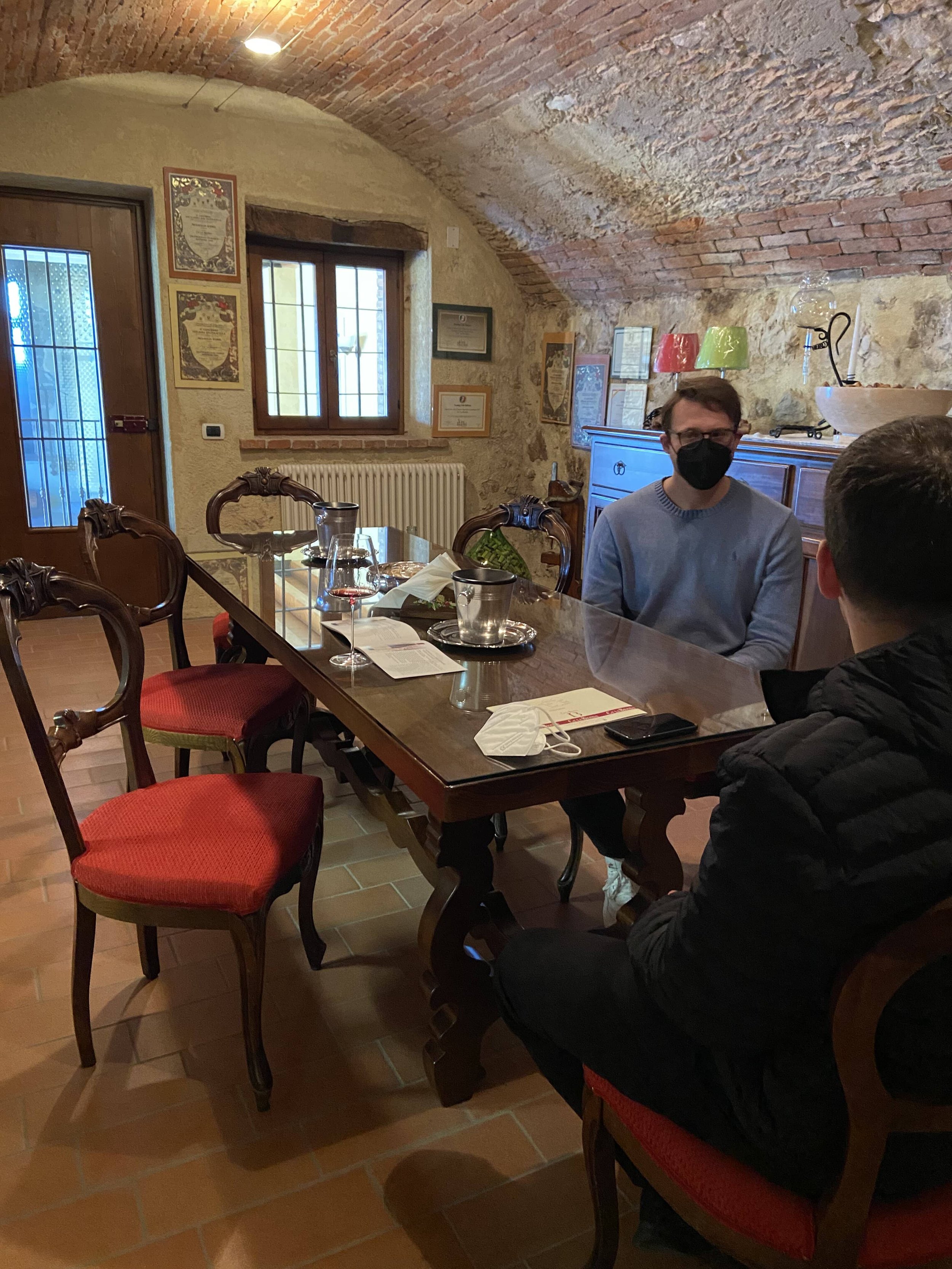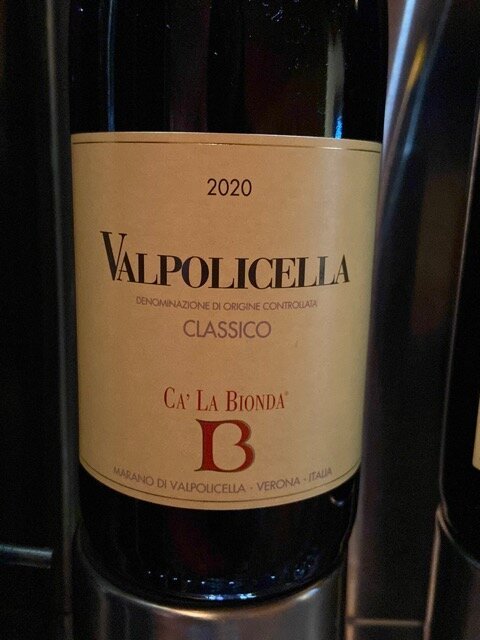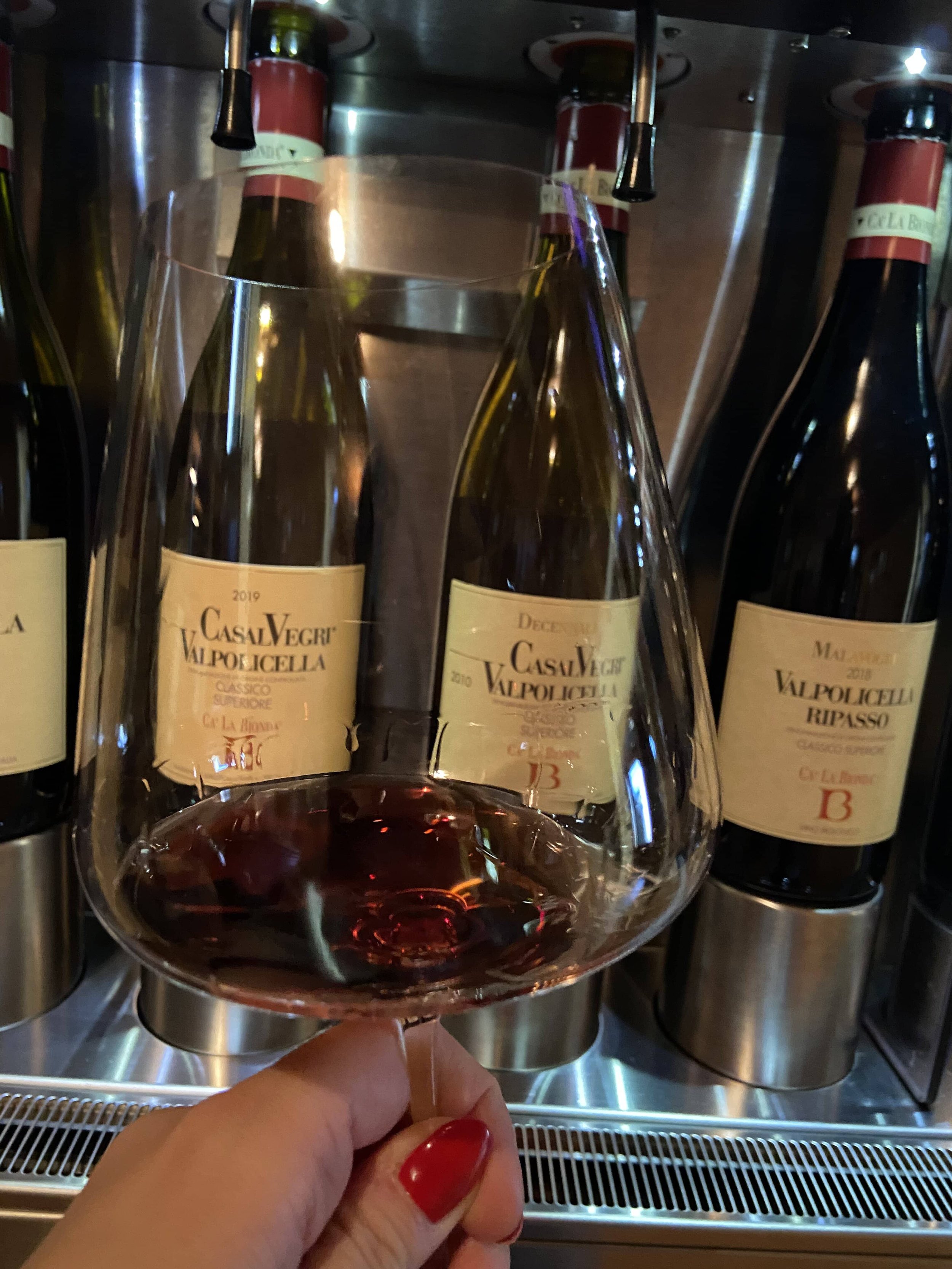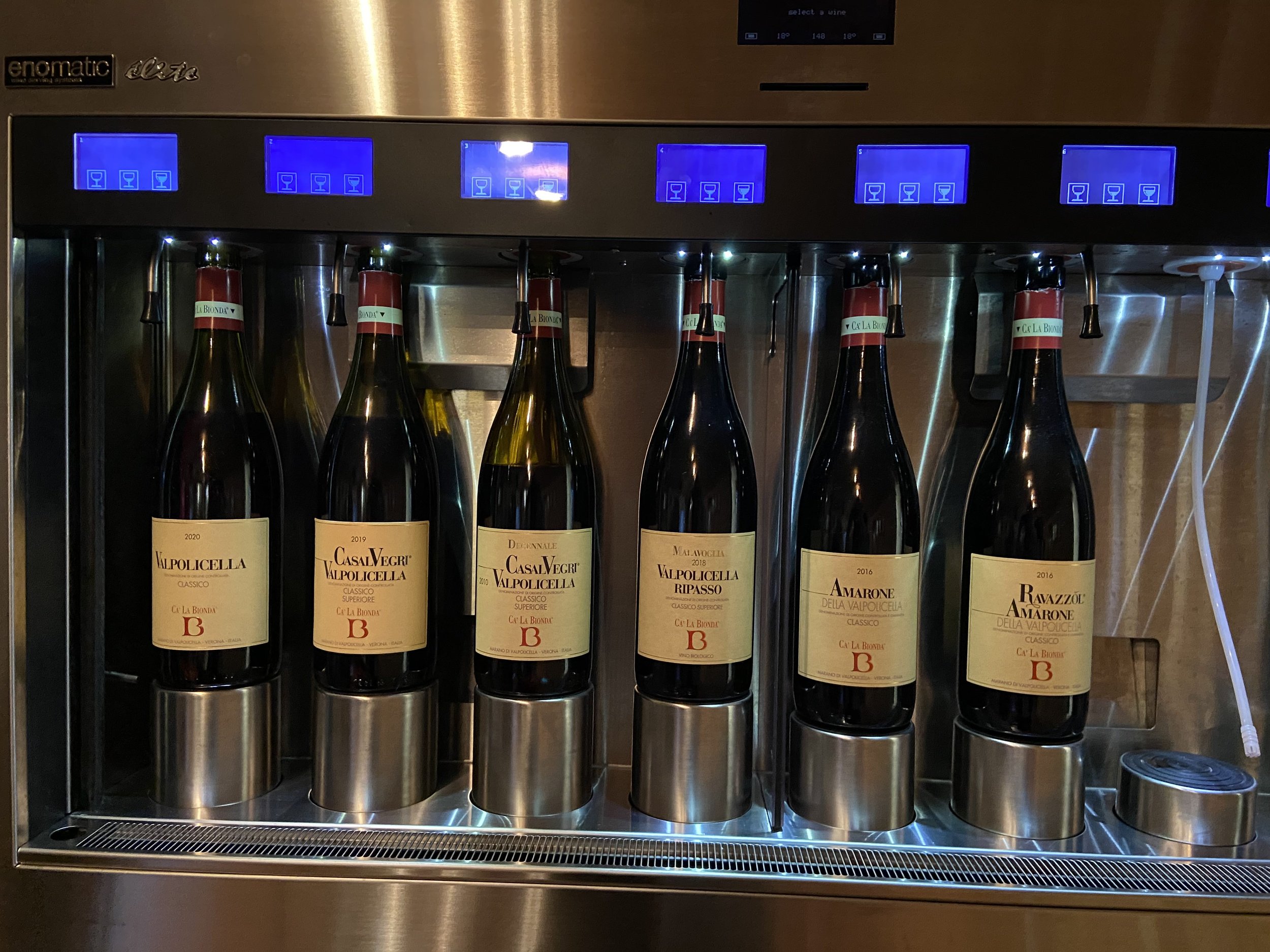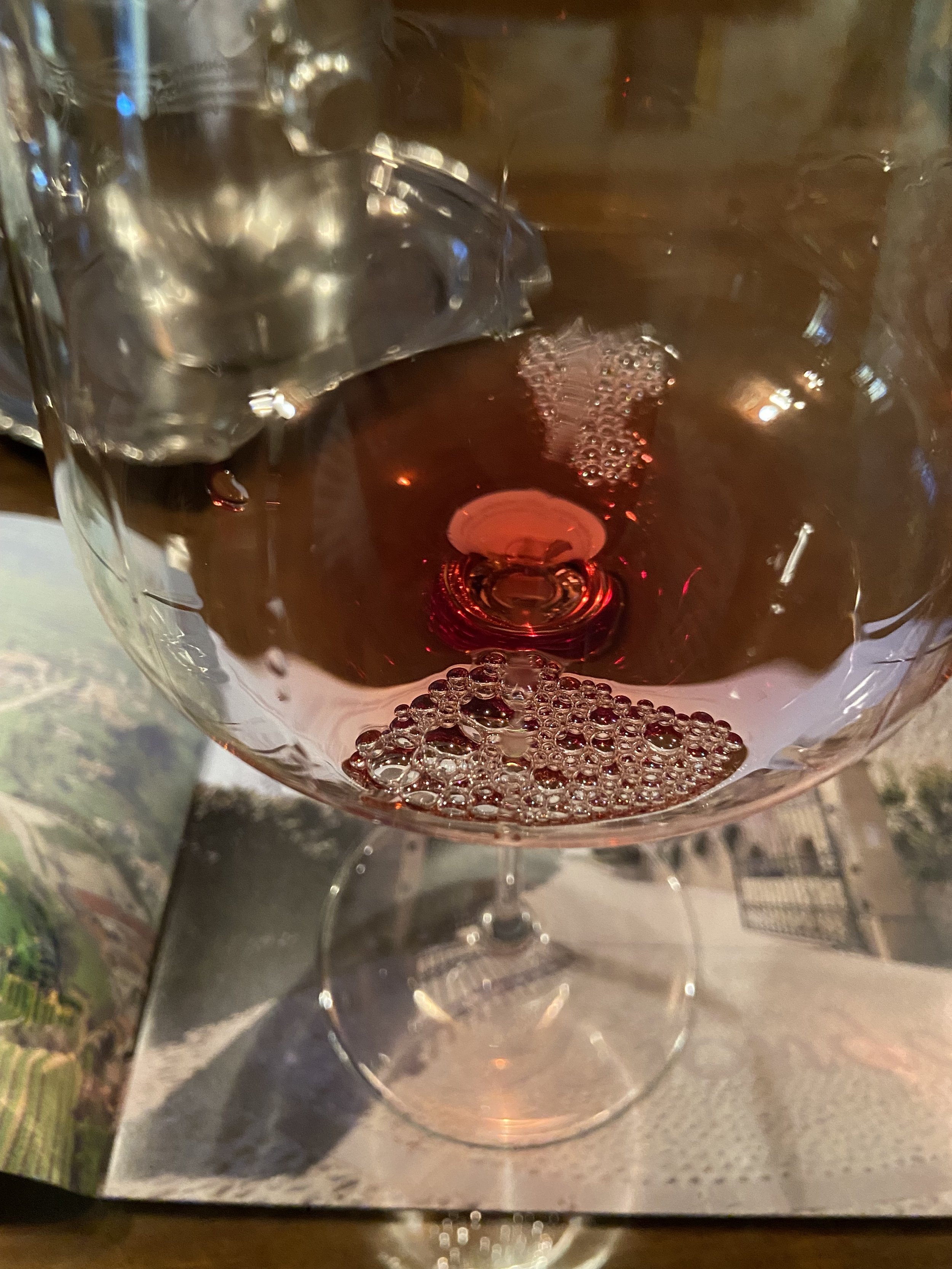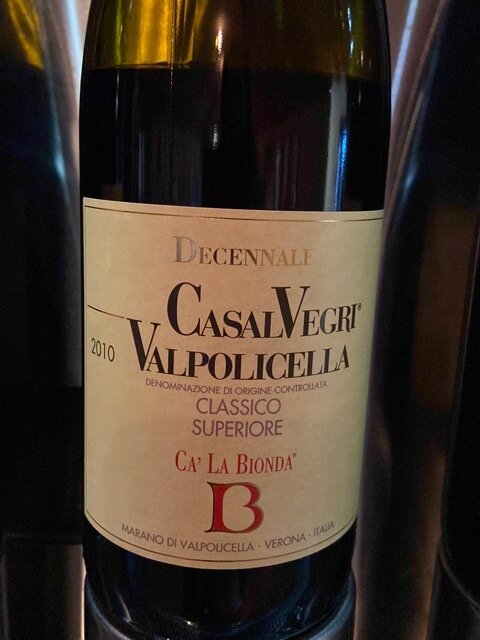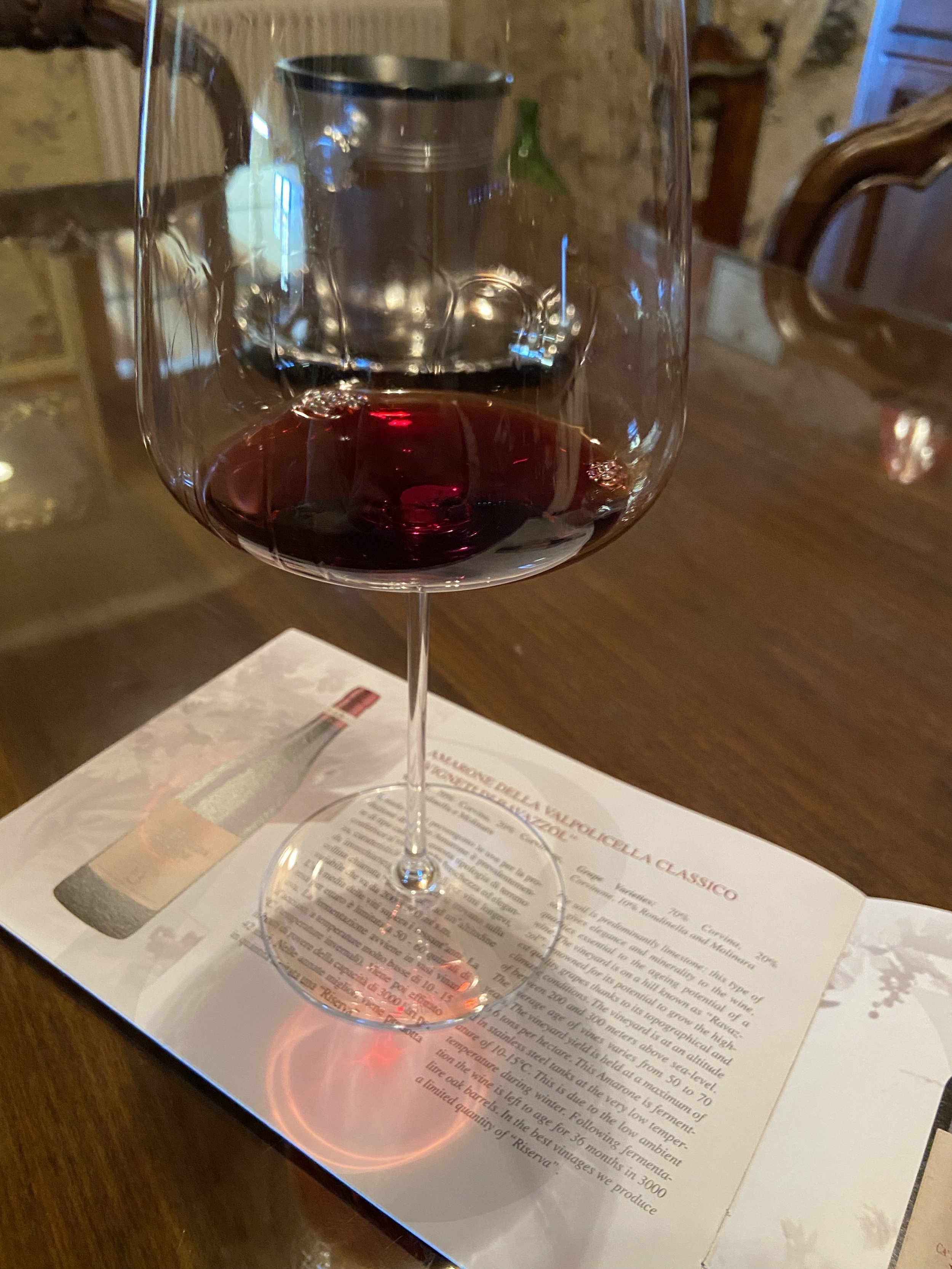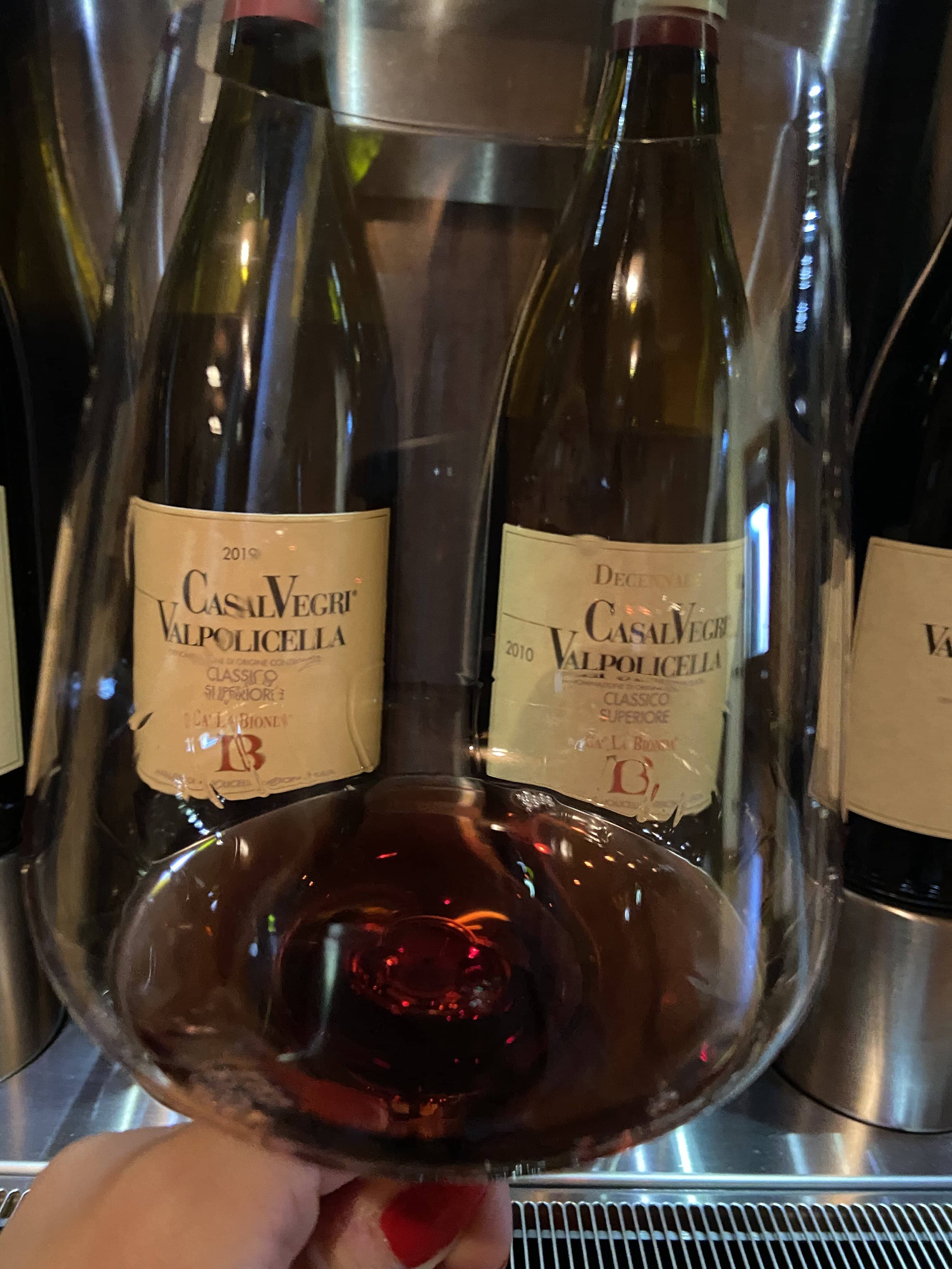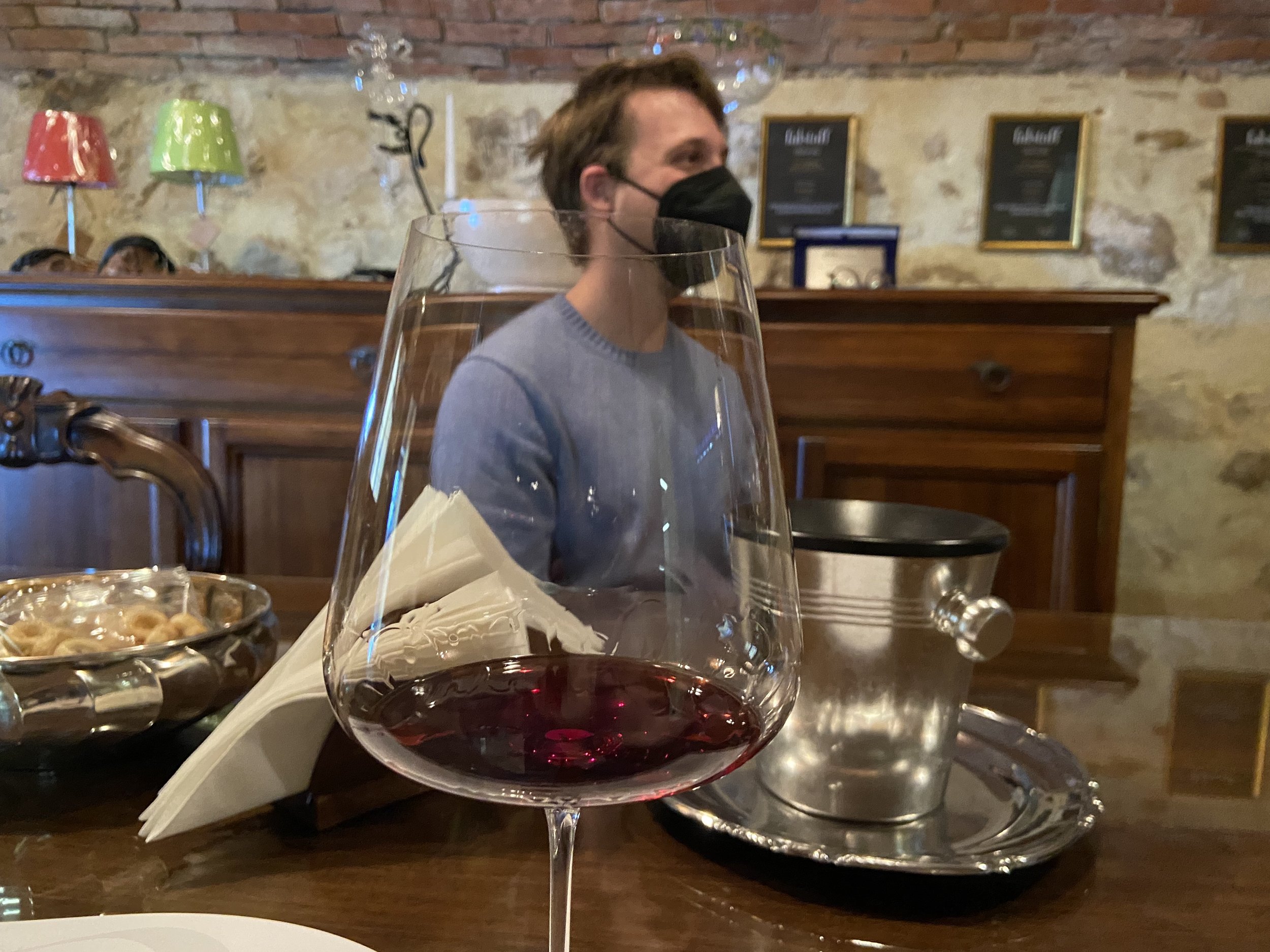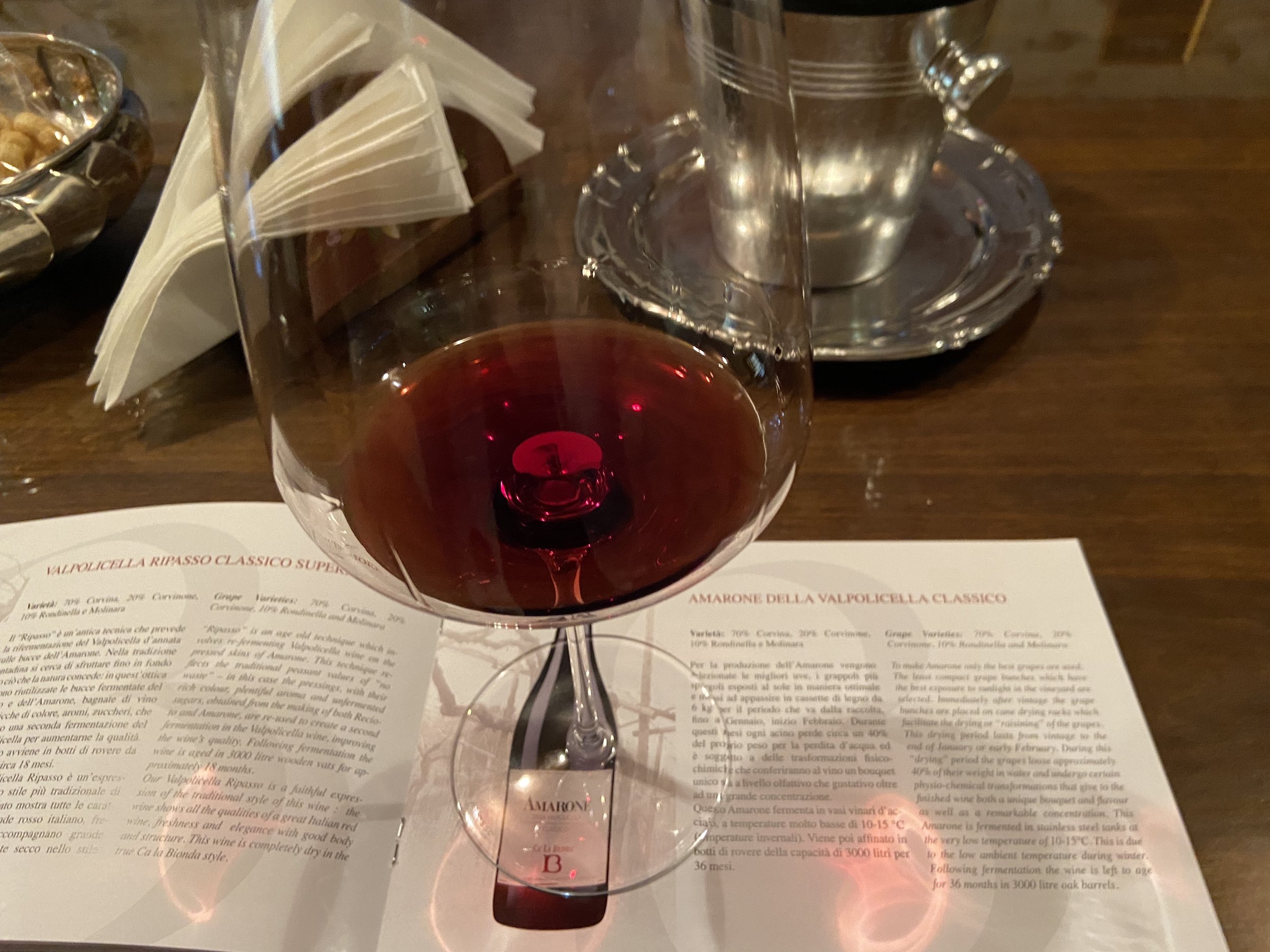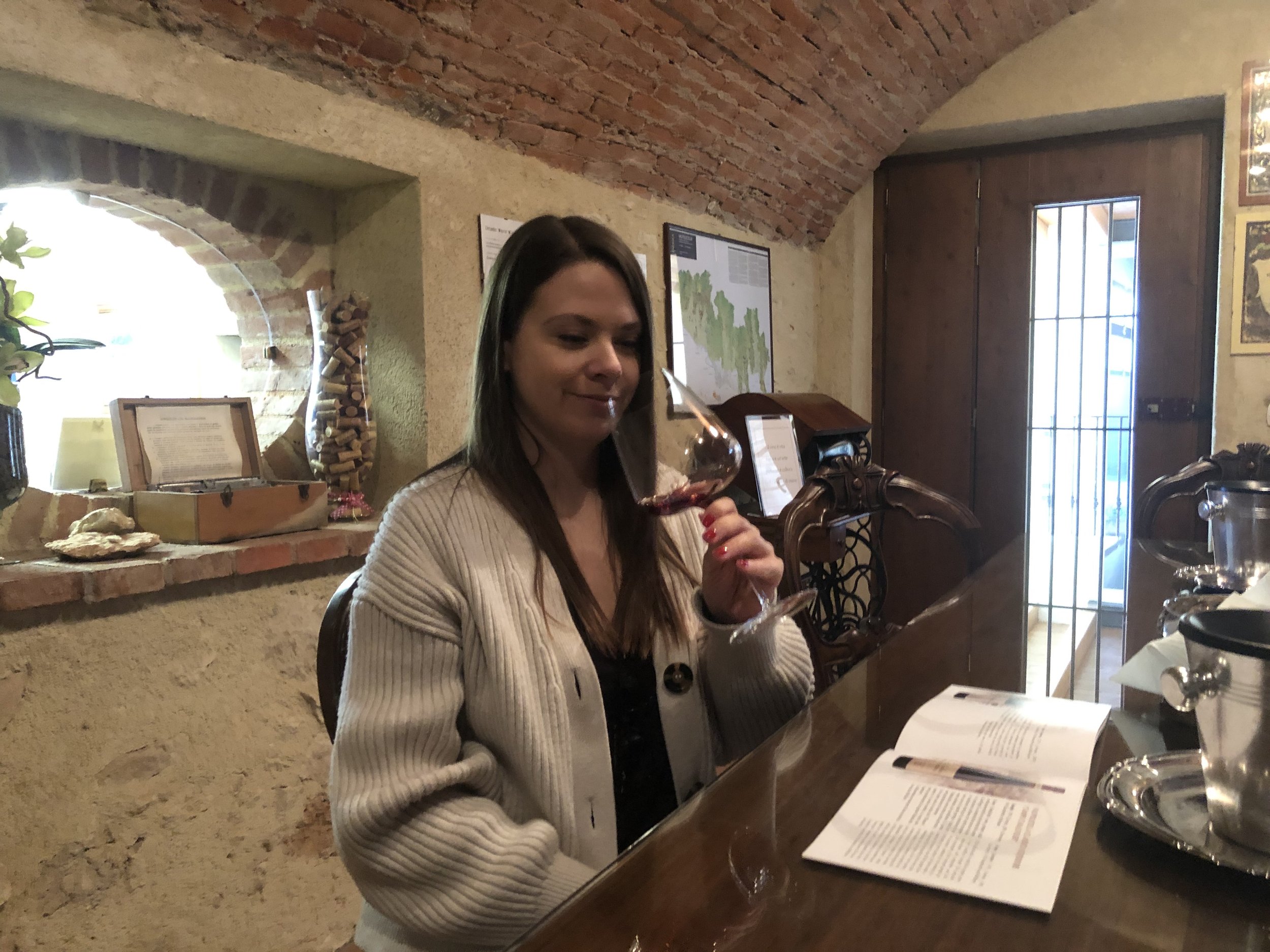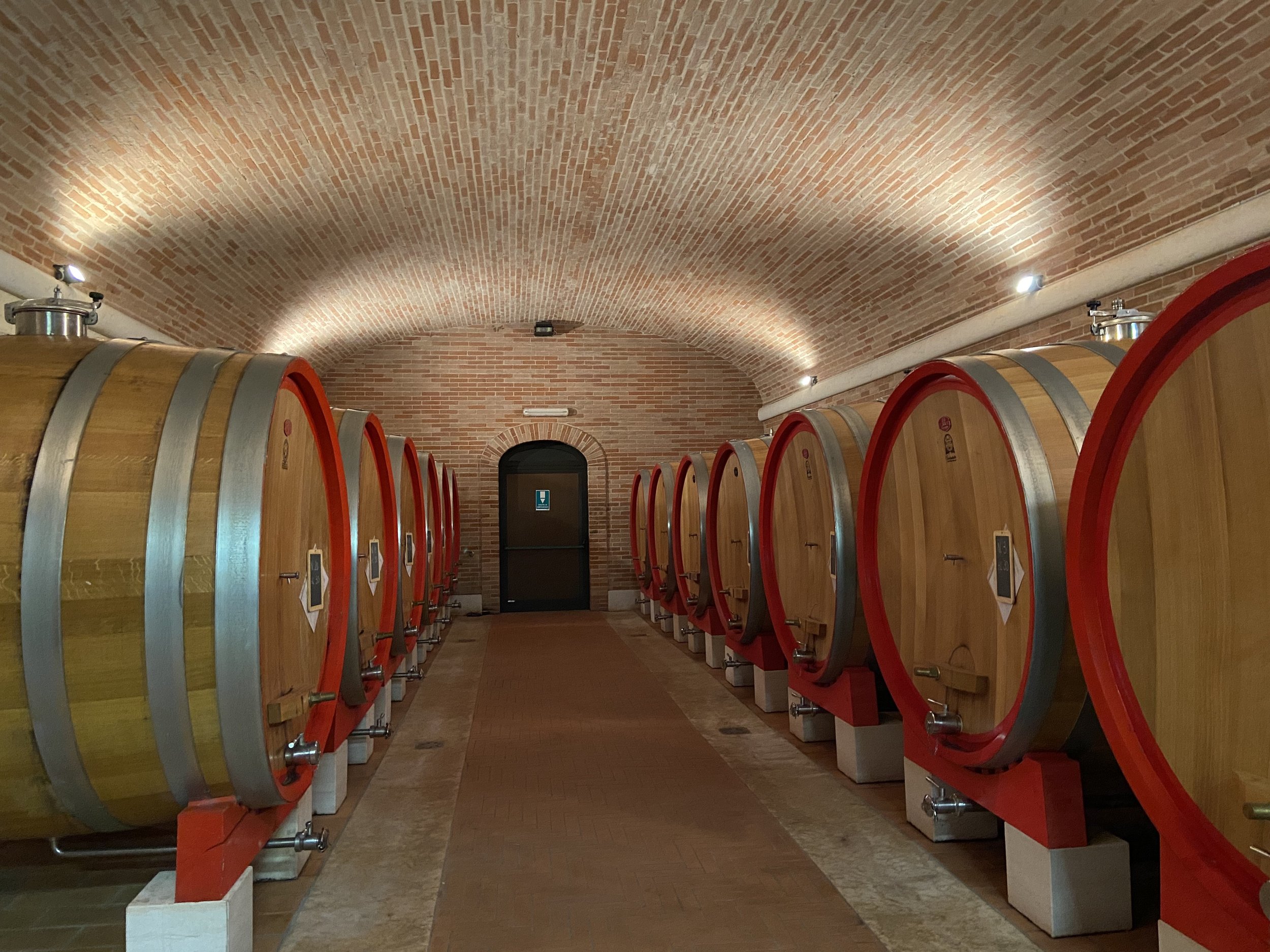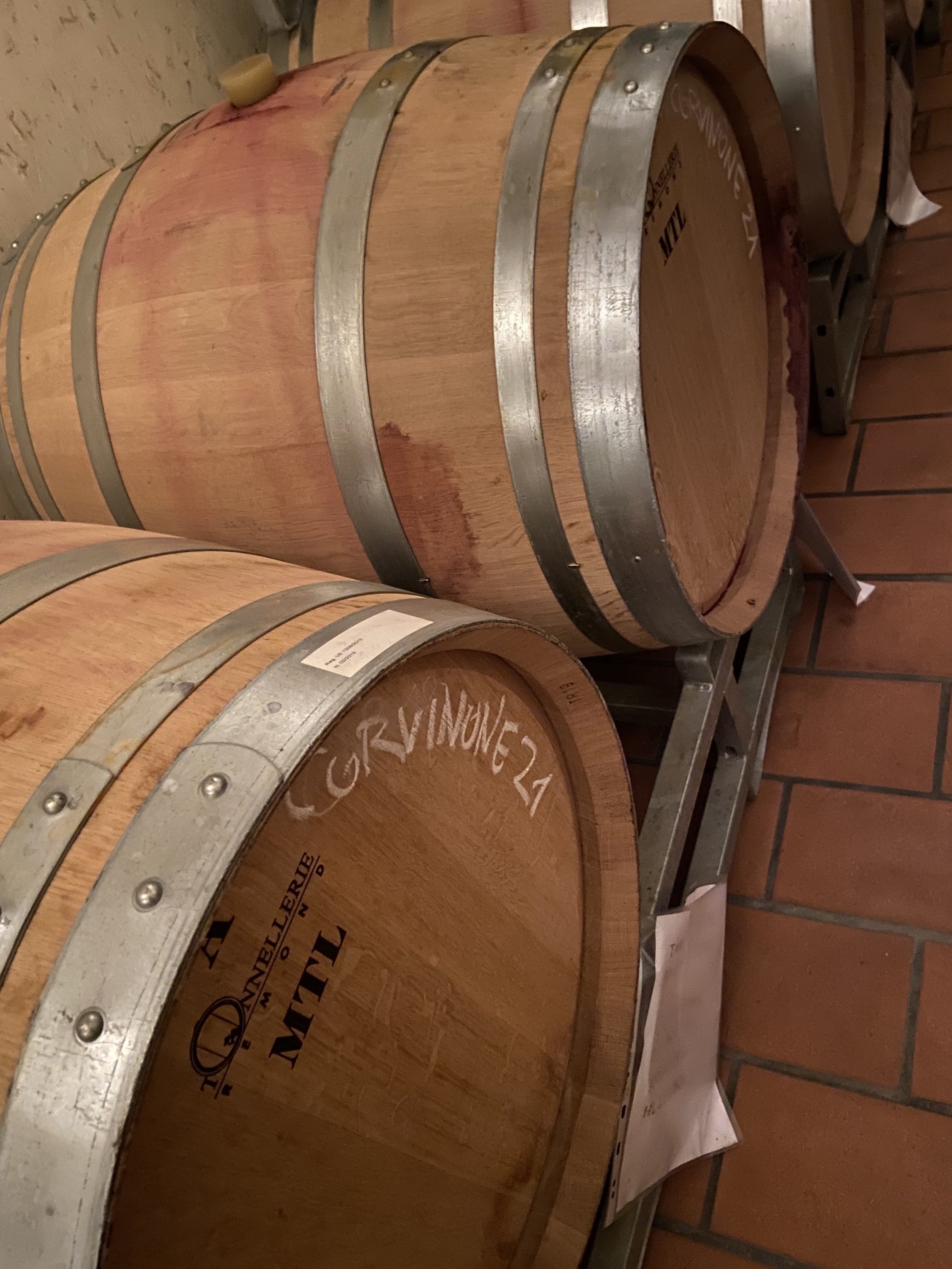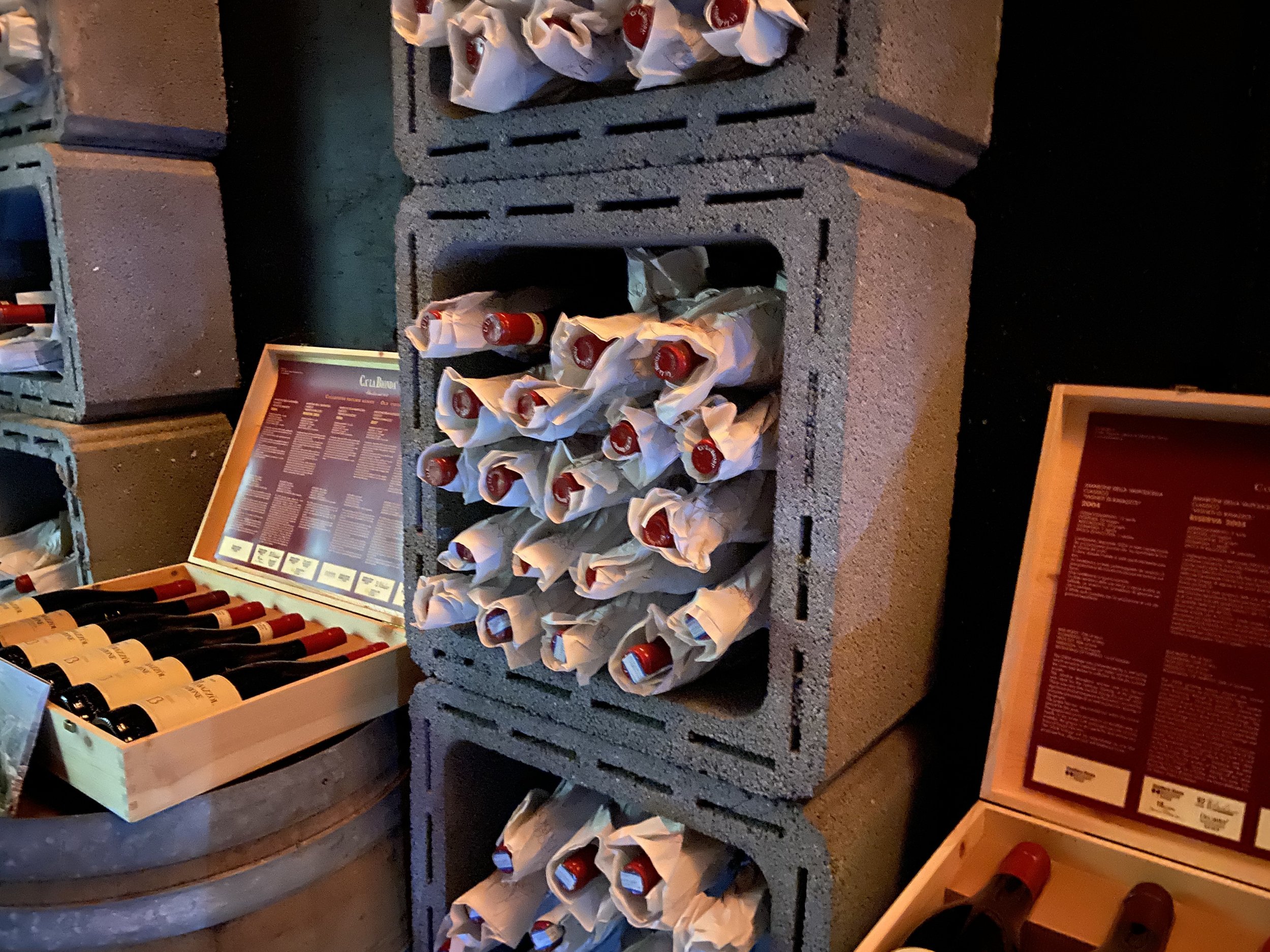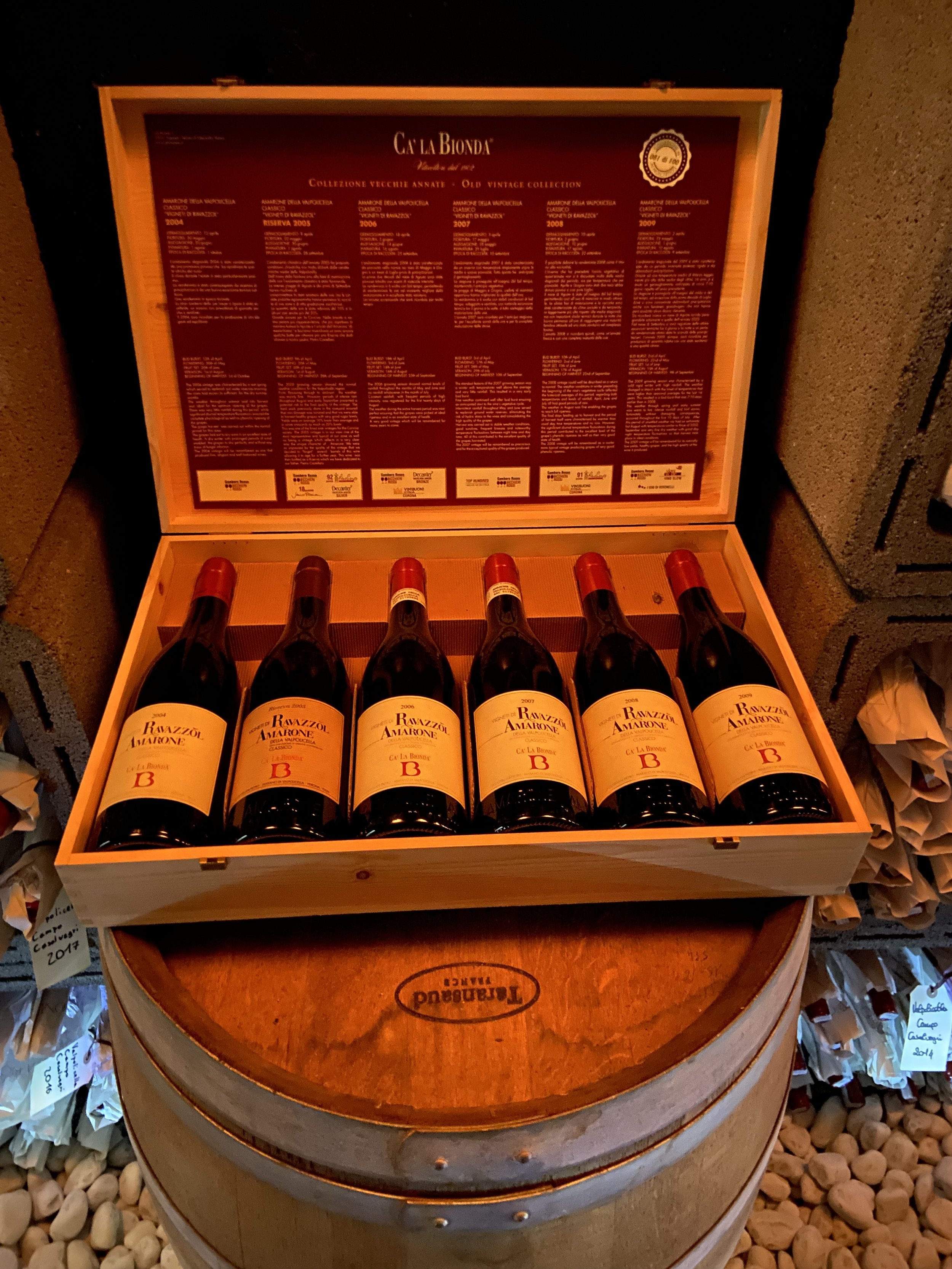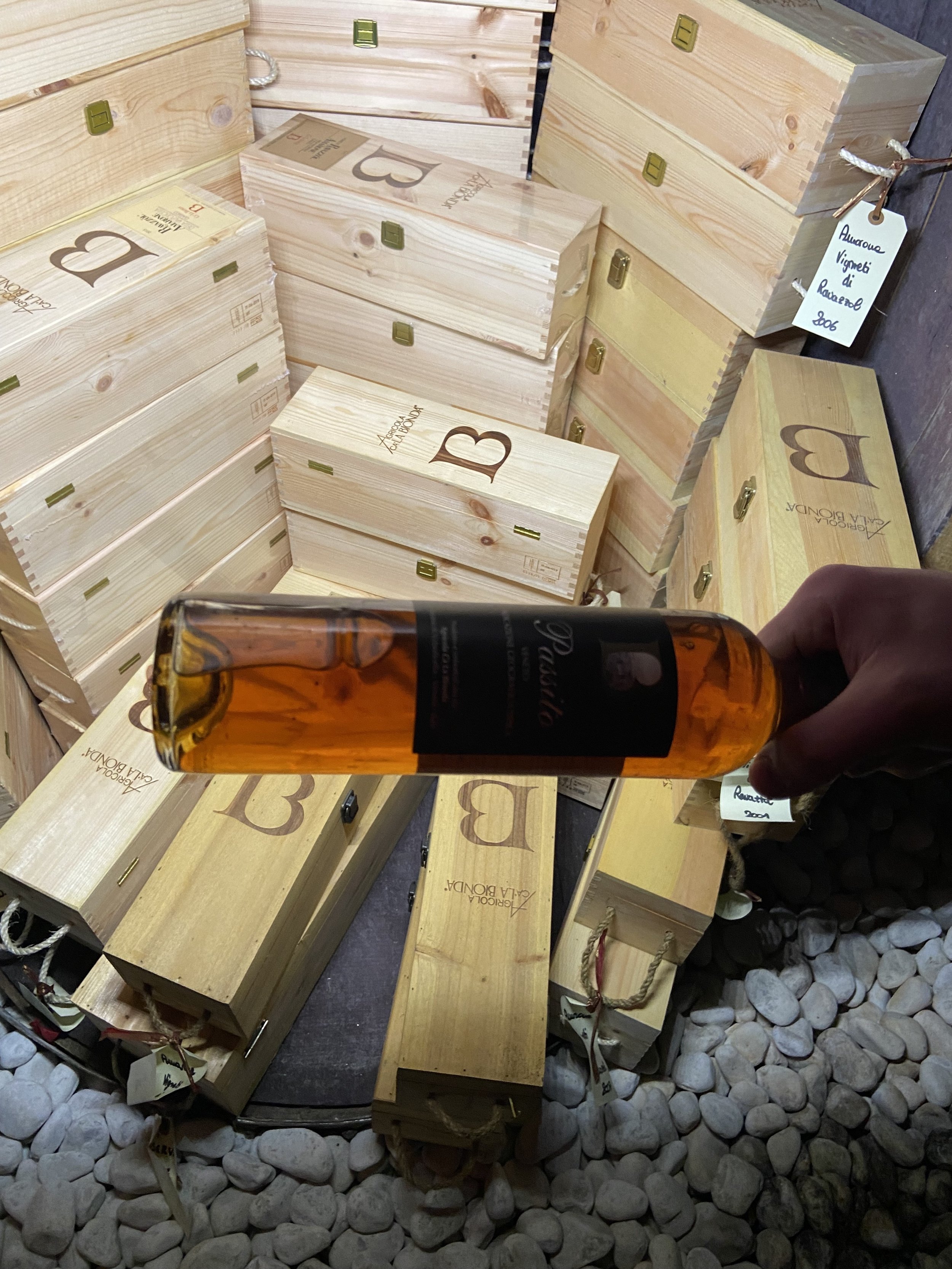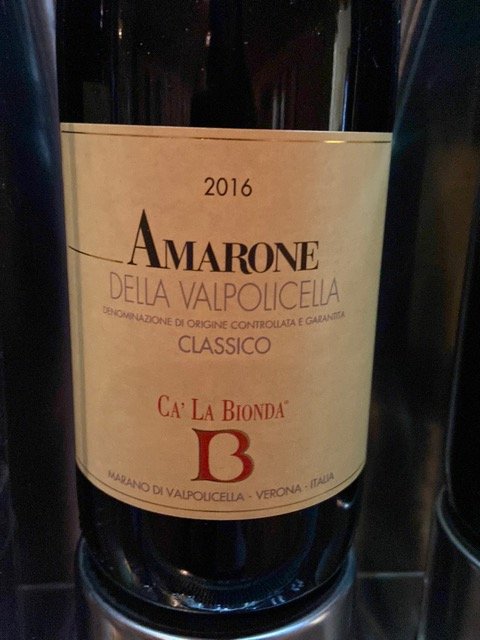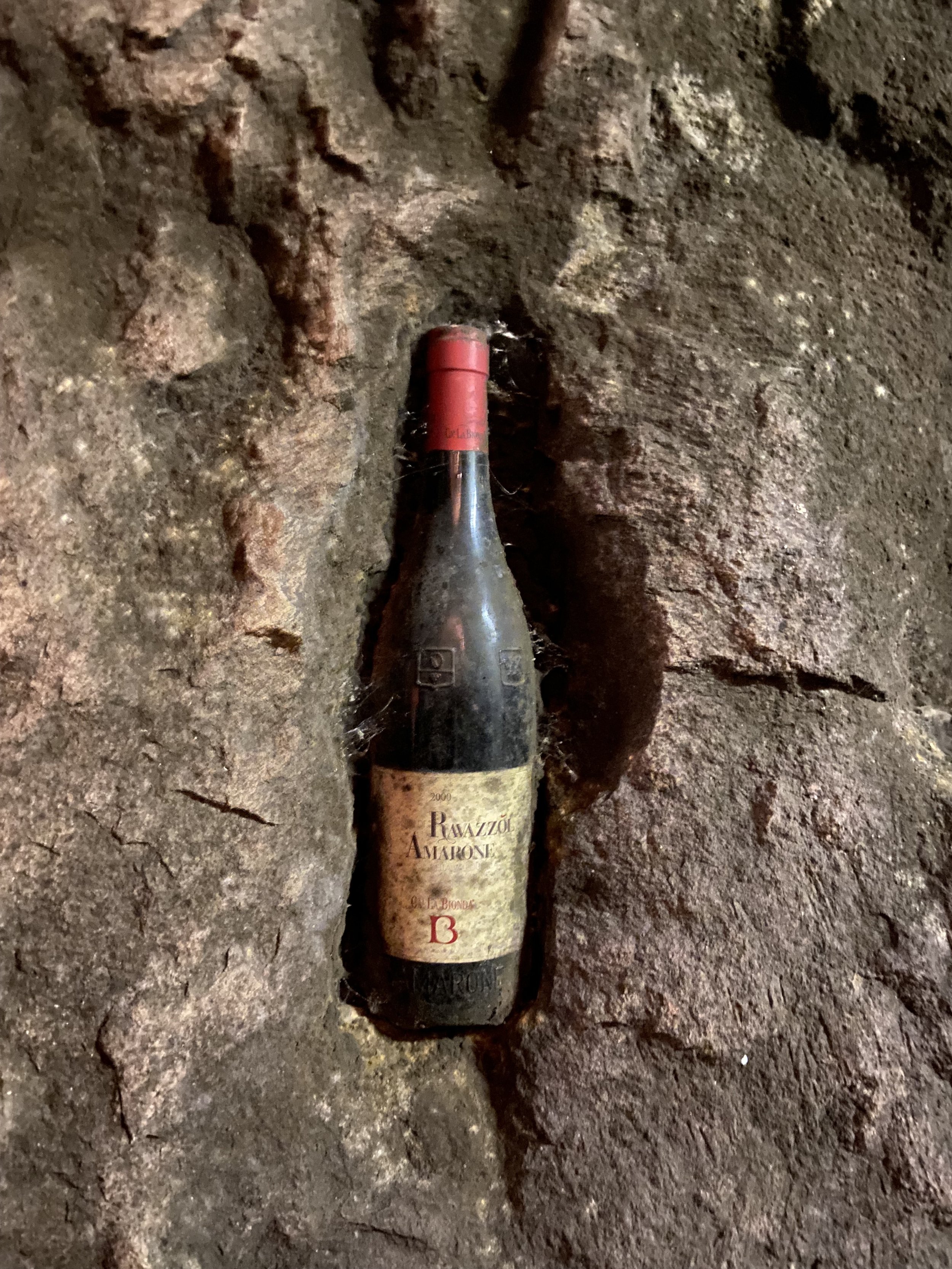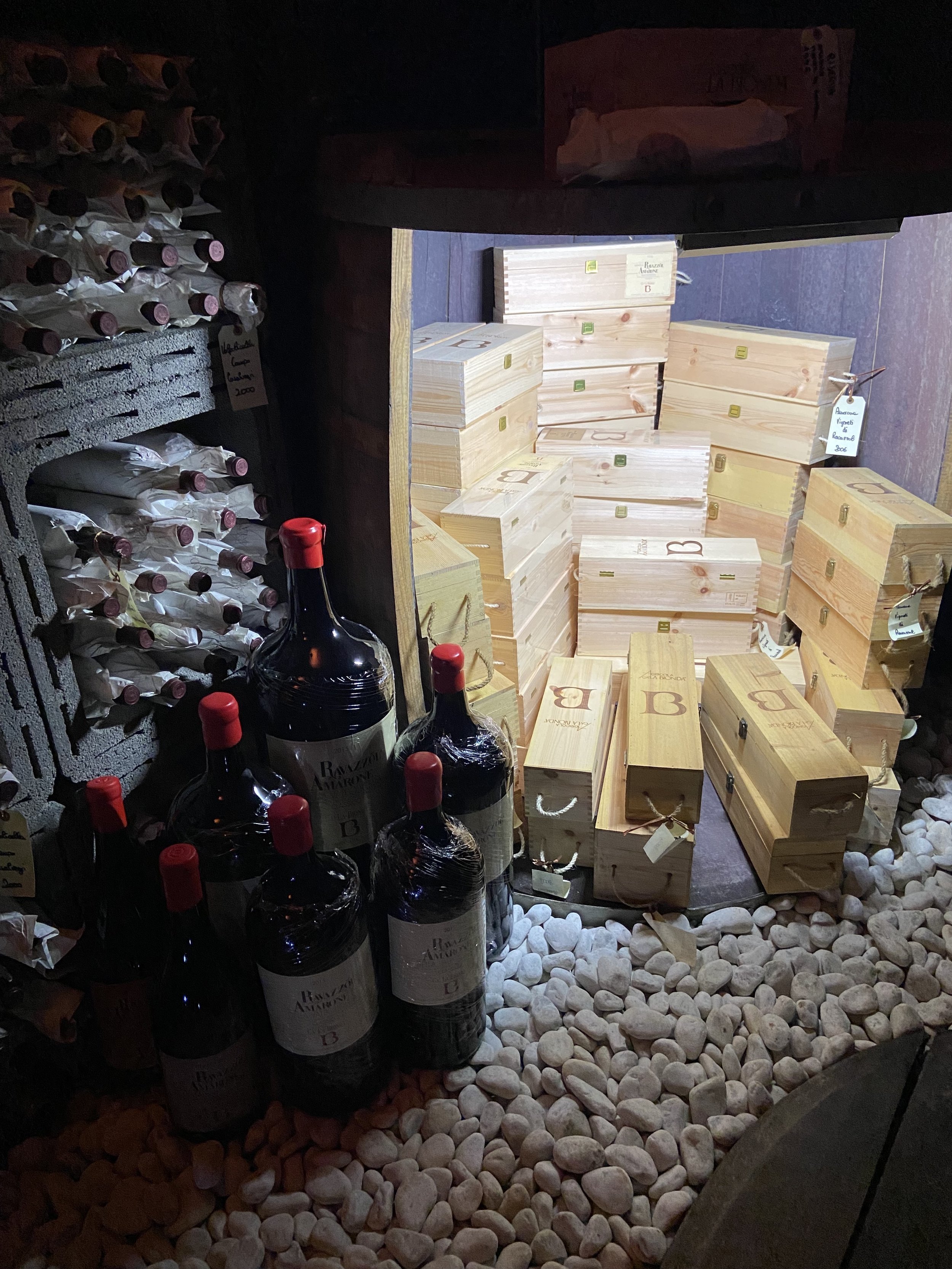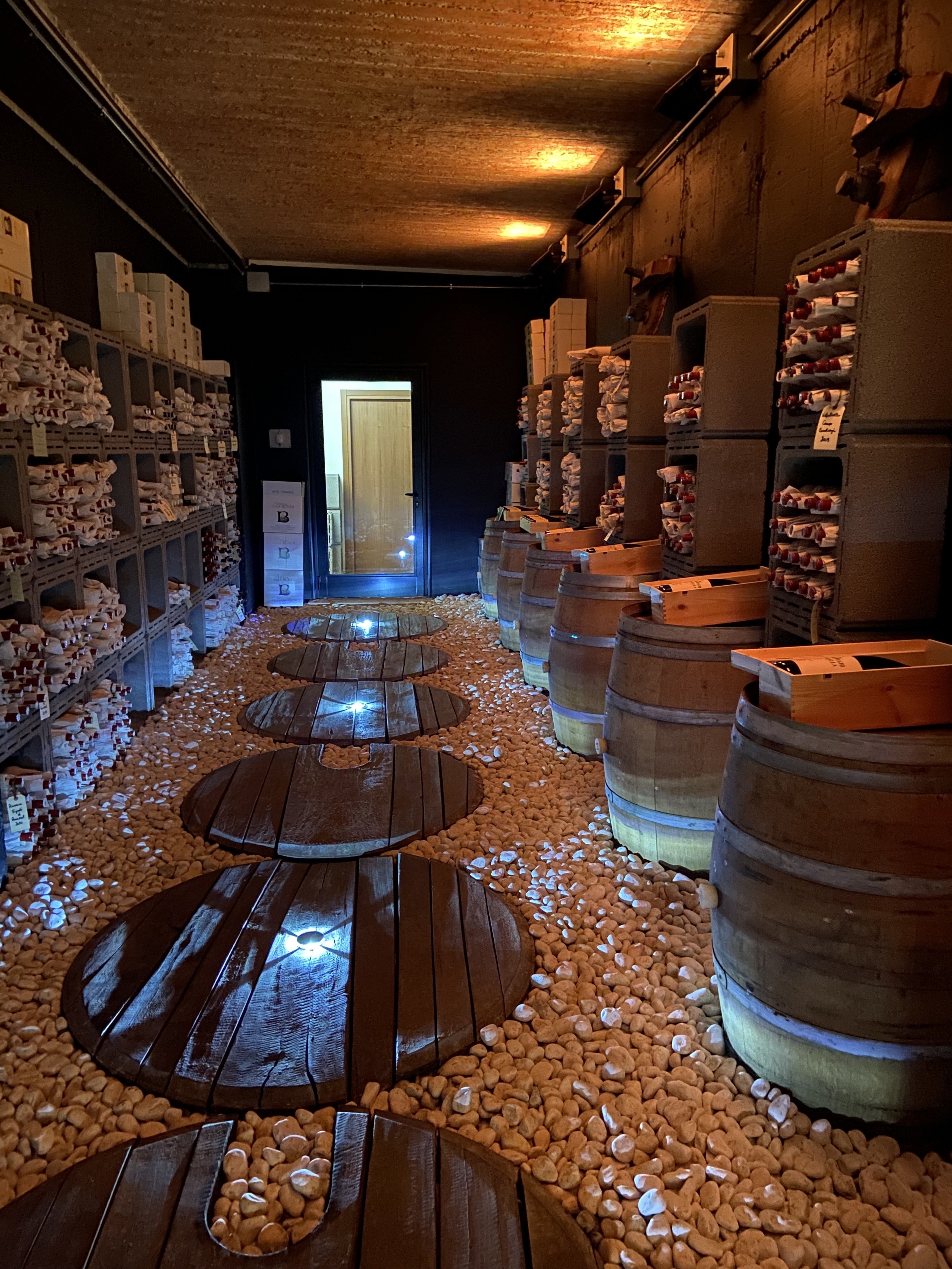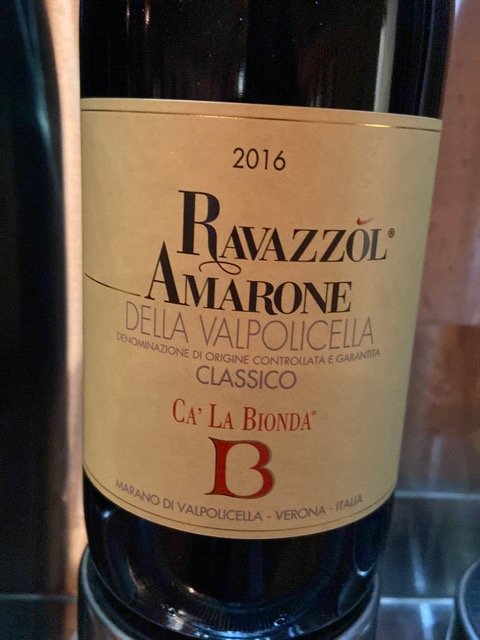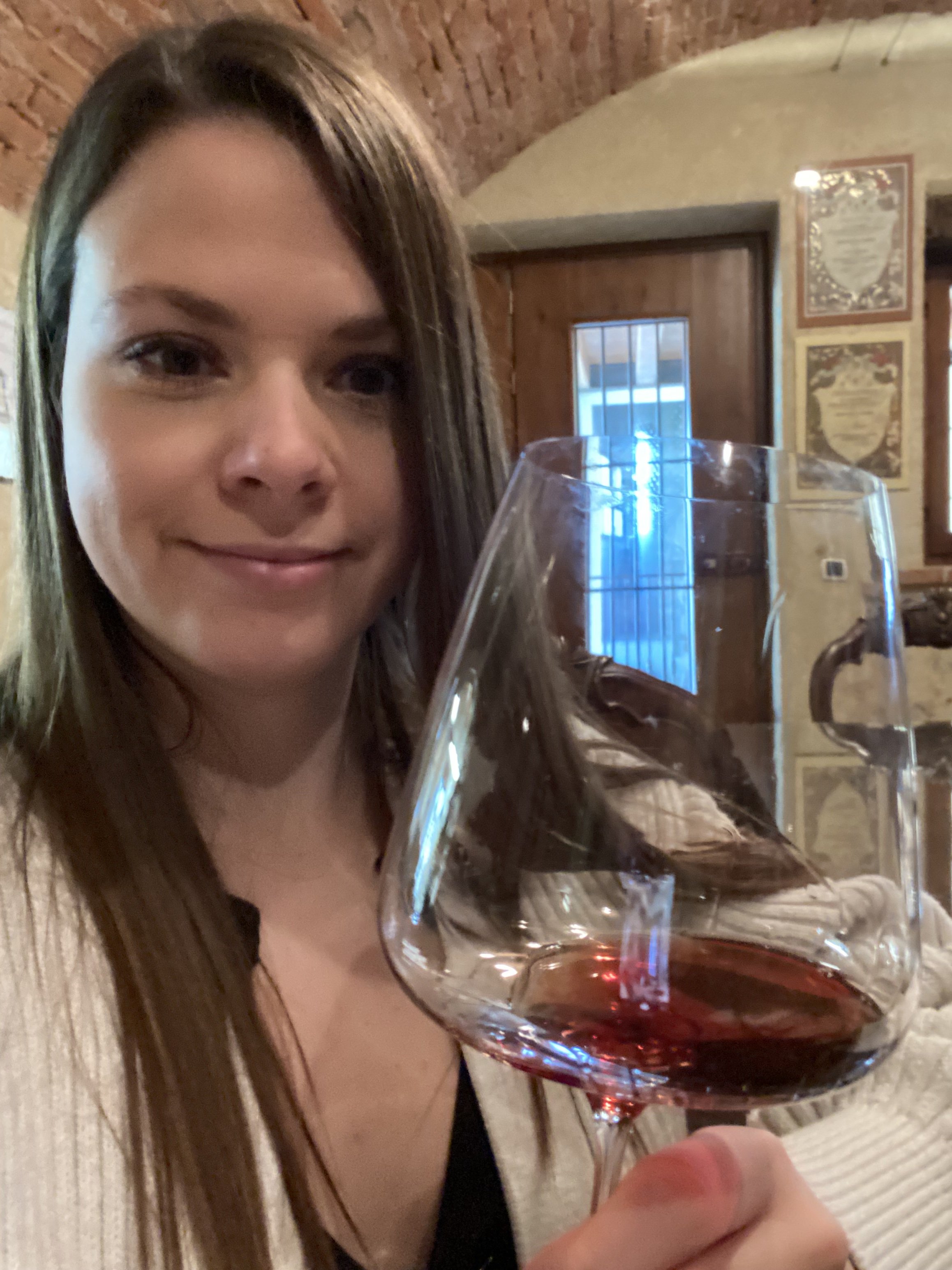Valpolicella. Azienda Agricola Ca’ la Bionda
Do you like skiing in Italy? Next time when you’re on your way to the magnificent Alps or Dolomites stop by in the Valpolicella region and visit Azienda Agricola Ca’ la Bionda. Situated in the heart of the historically “classic” Valpolicella zone vineyard area extends over 29 hectares of hillside land. Castellani family, now in its fourth generation, started producing Valpolicella Superiore in 1989 and what is very unique they are vinifying the wine without the process of grape drying known as appassimento that is essential for the making of Recioto and Amarone, the region’s greatest and most noble wines.
The first time I tried Ca’ La Bionda’s wines was in Lisbon in 2019 in an exceptional wine bar Wines by Heart. Thank you for the recommendation G! It led me straight to the vineyard, just after a lovely visit with Francesco at Quintarelli. I have been warmly received by Ludovico and stayed for 3 hours talking about their production, philosophy and the future of the region.
Azienda Agricola Ca’ la Bionda is always using 70% Corvina, 20% Corvinone, 10% Rondinella and Molinara mix for their wines. They consider Corvina to be “wild Italian Pinot Noir” with all its aspects. In the best vintages they produce wines made from 100% Corvina grapes, so far there were only three: 2005, 2008, 2013. 2016 will be the fourth one.
Valpolicella Classico is the entry wine, staying 6 months in a stainless steel tank, so it is not impacted by the wood. The idea was to create Valpolicella as pure as possible. All the wines undergo spontaneous fermentation with wild yeast and controlled temperatures. For Amarone, after pressing the grapes, temperatures in the vats are sometimes increased to support the natural fermentation. The idea is to reflect the terroir as much as possible. Alessandro is the winemaker, Nicola is the agronomist and Pietro – Alessandro’s & Nicola’s father is the founder of the winery. Pietro is still very much involved in the vineyard. Both Alessandro and Nicola studied wine all over the world to expand their knowledge. When they came back after gathering experience they decided to micro-vinify the parcels to learn more about the land they were looking after. As a result of these studies they decided to make a particular crus. Currently Azienda Agricola Ca’ la Bionda holds organic certified status.
The philosophy around the region is that you should drink Valpolicella Classico within a year of the vintage. This is not the perspective of Ca’La Bionda. They believe that a great vintage of Valpolicella Classico, even without aging in a wooden barrel deserves to be kept for 5 to 6 years - bringing you tons of improvement. For the above-mentioned vintages (2019 & 2021) they believe that even for the regular Valpolicella you should cellar the bottles for at least 2 years before drinking. My feeling during the tasting was that these wines are not solely focused on the fruit but try not to miss out on the other components of a great wine. They aren’t massive wines, beefy, heavy, calling for a dish with a creamy, fat sauce to render it with wine's acidity. Fruit is kept in check and you can feel that the winemaker is looking for the elegance in the wines, which are an orchestra of flavors with the terroir taking the centre stage. Freshness, acidity, and concentration are all in great balance. Ludovico told me that the sensations are very much in line with their picking strategy – always doing it on an earlier side, which differentiates them from usual Valpolicella labels.
The first cru is the Valpolicella Classico Superiore Casalvegri. It is elegant and fresh. The fruit is restrained and not very punchy. Cherry notes are prevalent, which is typical for the Valpolicella produced in the Marano Valley. Soil is mostly clay and limestone, which Marano is very famous for. Above the house you will find the cru of Ravazzòl where Ca La Bionda is producing their Amarone. This cru is based solely on limestone however there are also some volcanic soils around the vineyard. Limestone is hard and the vine has to go down deep to find the nutrients. It usually takes 6 or 7 years for roots to breach the hard barrier of limestone soils and when they do it’s fascinating how it changes the flavour profile of the wine.
Ca’ la Bionda started to produce Valpolicella Superiore in 1989 and what is unique is that the grapes are vinified without the drying process, exclusively fresh grapes are used to produce this label. Casalvegri is a dedicated parcel to produce Valpolicella Superiore and that is also the reason why it’s the only vineyard pruned with the guyot method as opposed to pergola. The fermentation begins immediately after the harvest to ensure freshness of the wine. It is also important for the abv. level which can be lower – 13% for example. It is both elegant and structured and maintains good balance. The idea was very much up against the current at the time, walking away from barriques and moving over to the big casks to reduce the influence of the oak and maintain fresh fruit rather than jammy notes. Maintaining freshness is the goal here and hence the decision to clearly draw the line between the labels – at Ca’ la Bionda appassimento happens only for the Amarone. The point was to prove that Valpolicella can be a great wine without the dried grapes. The colour is very translucent. Another interesting twist comes with Alessandro’s belief that Valpolicella doesn’t have to be a wine to be drunk early – on the contrary, their Valpolicella was designed to be aged.
The second label I tasted was Valpolicella Superiore Casalvegri Decennale that is being sold after aging – the name alludes to the 10 years of aging it has been given. It stays for 9 years in big casks from French oak and one extra year in a bottle. The current vintage I had was 2010. After gaining experience with Sangiovese in Chianti and Nebbiolo in Barolo, Alessandro wanted to produce an age-worthy wine with fresh grapes in the region of Valpolicella. The goal was to show that this region also can work with a single variety to produce great wines with aging potential without the drying process of appassimento.
In the early 2000’s Alessandro & Nicola introduced organic and biodynamic viticulture. Ca’ la Bionda was certified officially in 2012 and the first bottles to receive the stamp were from the 2016 vintage, however, the principles were already in place many years before that. Alessandro was one of the founding fathers of FIVI (Federazione Italiana Vignaioli Indipendenti) – the federation of independent wine growers in Italy and he used to be the president of FIVI for the Valpolicella region. As I write these words, Alessandro became a father and decided to end his tenure as the head of FIVI Valpolicella. The voting for a new president was to be held in March 2022.
The name Ca’La Bionda and its meaning is a mystery. In Italian, bionda means a blonde girl. The legend says that a long time ago in the neighborhood lived a lady whose hair never turned grey and remained blonde until the end of her days. So this is part of “La Bionda”. And the Ca stands for casale which means house in Italian. Therefore the name of the vineyard is “house of the blonde girl”. The company was founded by Pietro (Alessandro & Nicola fathers) in 1901. Pietro had another company with his brother, but they had a different vision of what the company should become. Pietro decided to go back home, where the winery is located (a place where he used to live as a child), and start something new with his sons, thus Ca’La Bionda was established. Pietro bought the land directly behind the house, which was on a steep slope perfectly suited to produce high-quality wines. People at that time were getting interested in mechanical harvest and preferred to build vineyards on flatter land to make harvesting easier. Back then Pietro was one of the very few who decided to go against this trend and stick with the hills, taking into account the extra amount of work required. Buying the land piece by piece he compiled enough land to produce his first vintage in the middle of the 20th century. On the cusp of the 21st century, Alessandro and Nicola started to work with Pietro and the 1997 vintage is officially recognized as the first vintage of the new wave.
Coming back to Valpolicella Superiore Casalvegri Decennale the wine has an amazing structure and is very smooth. Ca La’ Bionda produces a small amount of Reciotto, but they only produce a vintage every three years. The current release is 2015. Reciotto is aged for 5 or 6 years in a single oak cask. Appassimento is used for the reciotto. With the recent climate changes, you can expect a perfect maturation of grapes directly from the vineyard, however, it is now a serious threat to stall the harvest for too long. This can lead to the grapes being “cooked” and overripe, as well as loss of acidity and freshness, hence the early harvest strategy mentioned above.
Ca La’ Bionda produces two kinds of Amarone. Firstly, there is a “regular” Amarone. The 2015 vintage was apparently very good for Ca’ La Bionda. During the last decade, many vintages turned out good to great, to name a few 2012, 2015, 2016, 2019 and 2021. Currently, we hear a lot of hype surrounding 2021 but obviously, these wines are a long way off from being bottled so we will have to wait and see. Ludovico mentioned it will be super difficult in 2021 to label the Valpolicella as “only” Valpolicella due to the vintage quality. The wine already holds such a great promise, he believes it should be labeled from Valpolicella Superiore upwards. That being said, there is no plan to skip the regular Valpolicella.
The regular Amarone comes from the three different parcels surrounding the cru of Ravazzòl. All these parcels have a mixed soil – volcanic, clay, and limestone. Mixing those three gives the best expression of Amarone from the Marano Valley. The wine has a delicate cherry blossom flavor, hints of cinnamon and herbs. It’s sharp on the palate with a very long and elegant finish. Then we move towards the flagship label of the winery – Amarone from a single cru Ravazzòl. This is a product of meticulous research conducted by Alessandro and Nicola – they decided to do a lot of micro-vinification of different plots of soils in order to distinguish the very best. They found out that the zone of Ravazzòl was very particular and hence the decision to make a single cru Amarone out of it.
The project started in 2000 when Ca’La Bionda decided to produce two different Amarone, feeling that each particular terroir deserves its own label The entire process is exactly the same as with the regular Amarone, the fruit is being the only distinction between the two. The vineyard is located between 200 and 300 meters above the sea level. The yields are limited to a maximum of 5 to 6 tons per hectare. The cru of Ravazzòl consists of old limestone soils exactly in the middle of the hill which gives a great exposition to the vines and very good drainage. The average age of the vines is between 80 and 90 years! This is possibly what stands behind the color of the cru which is darker, and more concentrated than the regular Amarone. The aging occurs in botti grande for 3 years and extra 8 months in the bottle. Ca’La Bionda produces around 9 thousand bottles of Ravazzòl per vintage, with the regular Amarone production slightly higher at 10 to 11 thousand. The overall production of the estate is approx. 120 000 bottles.
Ravazzol Amarone 2016 was even more focused on the palate, slightly more fruity, with spicy notes of coca, tobacco, licorice, and smoky notes – even in such a young wine! It is still very young in its development. This label requires at least 10 years of aging to show its full potential. The tobacco note is apparently very common for the grapes sourced from Ravazzòl cru, even in the case of fruit which has been discarded as not good enough for Amarone. Those grapes land in the stainless steel vat for the regular Valpolicella and separate vinification proves that even these grapes contain the typical tobacco note although they do not come in contact with the wood. You can clearly sense that although appassimento is used for the production of Amarone the early picking makes all the difference. You will not find the heaviness or cooked fruit, but raisin character often occurs in those wines. Thank you Ludovico for a lovely story and tasting, I look forward to visiting you again!
In Poland Ca’La Bionda wines are imported by Vini e Affini, you can find them at Wine Corner’s website and in 3 shops in Warsaw:
Cà la Bionda – 'Malavoglia’ Valpolicella Ripasso 2018 - 129,00 zł
Valpolicella Cl. Sup.`Casalvegri` BIONDA D.O.C. Valpolicella Cl. Superiore 2018 - 129,00 zł
Ca’La Bionda – 'Ravazzol’ Amarone Classico Magnum 2015 - 599,00 zł
